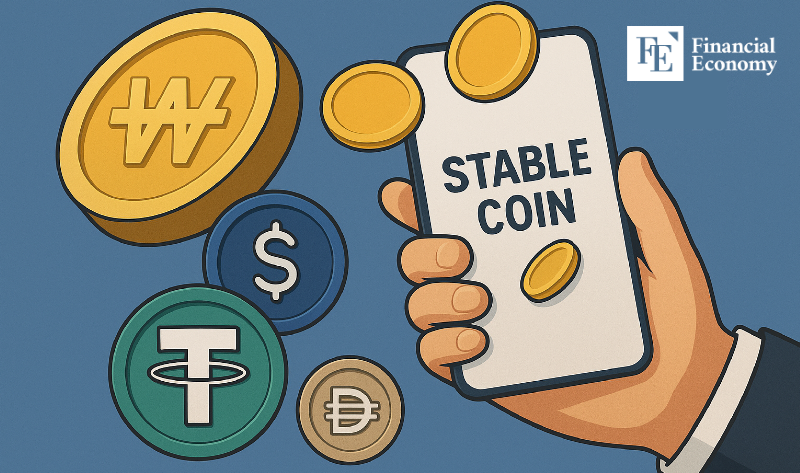“Allowing Non-Bank Issuance Raises Concerns of Money Laundering and Capital Flight” — BOK Governor Stresses ‘Bank-Centric Gradual Introduction’ of Stablecoins
Input
Modified
Introduction of programmable currency functions through stablecoins Bank-centered introduction, with non-bank participation via consortia Structural disruption of bank-centered financial industry if non-bank issuance permitted

Bank of Korea Governor Rhee Chang-yong acknowledged the necessity of a won-denominated stablecoin but underscored the need for a cautious, bank-centric rollout. To minimize potential risks associated with the introduction of a won-based stablecoin, he stressed the importance of establishing sufficient safeguards during the legislative process, arguing that issuance should initially be confined to the heavily regulated banking sector before being gradually expanded.
Governor Rhee Advocates Prudence: “Stablecoins Should Begin with Banks and Expand Gradually”
On the 19th, during a plenary session of the National Assembly’s Strategy and Finance Committee, Governor Rhee responded to a detailed inquiry on stablecoins from lawmaker Park Soo-young of the People Power Party by stating, “Given the likelihood of global currencies becoming digitalized in the future, it is necessary to embed programmable features into money,” adding that “the Bank of Korea believes a won-based stablecoin is needed.” He cited use cases such as smart contracts — “For instance, an exporter could stipulate partial payment only after cargo crosses the Pacific, or real estate transactions could require conditional transfers” — as examples demonstrating why stablecoins and digital currencies are essential.
However, on the question of issuers, Rhee proposed a bank-centered approach. “If non-banks are allowed to issue stablecoins, even small entities with limited capital could gain entry. Despite possessing distributed ledger technology, they may have incentives to withhold transparent disclosure,” he warned. He emphasized that, particularly to prevent money laundering, only firms above a certain capital threshold should be permitted. “If firms with minimal capital are allowed, it would be difficult to respond when asked to facilitate money laundering. A minimum scale is necessary,” he stated.
Concerns were also raised regarding capital outflows. Rhee noted, “The issue is not only foreigners purchasing won stablecoins, but also residents buying foreign-currency stablecoins. If won stablecoins are deposited in overseas institutions, this effectively places domestic deposits abroad.” With current foreign remittances capped at $100,000 annually, he cautioned that won-based stablecoins could be exploited to circumvent capital controls.
He also highlighted limitations for monetary policy. “If non-banks issue stablecoins, while total quantity controls may curb expansion of the money supply, it becomes difficult to contract liquidity in adverse economic conditions,” he said. “Banks can be adjusted through reserve requirements, but non-banks cannot.” He added, “Although digitalizing currency is indeed necessary, to mitigate side effects a systematic, gradual approach is required — issuance should begin with banks, allowing them to experiment with public blockchain issuance, and only if truly necessary should non-banks be permitted.”

Potential Conduit for Illicit Capital Inflows
The concerns over capital flight mirror those the Bank of Korea has consistently voiced. At a won stablecoin forum hosted on the 18th by lawmaker Min Byung-deok of the Democratic Party, Ko Kyung-chul, head of the BOK’s Electronic Finance Team, flagged capital flight and foreign exchange circumvention as the foremost issues. If won-based stablecoins are used for cross-border transfers between personal wallets via public blockchains, they would not align with existing FX reporting frameworks. While transaction records would exist, the identities behind wallets would remain difficult to verify. Even with advances in KYC and AML technologies, the inherent transparency limits of blockchain would hinder regulatory oversight.
Given that won stablecoins are directly tied to the national currency, inadequate AML/KYC frameworks could make them a channel for illicit funds to re-enter the domestic financial system. Such a scenario could prompt severe regulatory crackdowns, paralyzing the market. Concentration of issuance among a few firms would also allow private entities to exert central bank-like influence over issuance volumes and exchange listings. If issuance volumes are manipulated for private gain or speculative purposes, the very stability promised by stablecoins would collapse.
Ko further warned of conflicts with the principle of separating banking and commerce. Citing the U.S. “Genius Act” (a stablecoin bill), he noted that allowing non-financial institutions to issue stablecoins could create distortions in competition and exacerbate big tech’s data monopolies. Ultimately, he argued, this could erode central banks’ monetary policy influence, since stablecoins could circulate beyond the reach of interest rate policy. Functioning as a parallel currency outside the formal financial system, they would undermine policy transmission. He therefore also proposed a model in which banks form consortia to issue stablecoins, with banks leveraging their experience in KYC and AML to assume accountability, while fintech firms focus on technology and scalability. Issuance volumes and reserve assets, he added, could be coordinated through public–private councils.
Risks of Digital Bank Runs and Policy-Induced Market Collapse
Another major risk cited by regulators and market participants is the prospect of a “digital bank run.” If issuers mismanage reserves or if confidence in collateralized assets falters, investors could withdraw en masse within hours. Unlike traditional bank runs that require physical presence, blockchain-based withdrawals could drain liquidity instantly with just a few wallet transfers.
If reserves are spread across bank deposits, government bonds, and short-term instruments, liquidation could destabilize financial markets and even render issuers insolvent. Should issuers seek higher returns by investing in riskier assets, trust would unravel even more quickly. As demonstrated by the Terra-Luna collapse in 2022, stablecoins can disintegrate overnight if reserves are insufficient or opaque.
The more fundamental threat lies in policy uncertainty. Any sudden tightening of regulations or outright issuance bans could precipitate market collapse. If foreign-issued won stablecoins proliferate domestically, regulators may respond forcefully due to concerns over monetary sovereignty and capital flight. These risks are far from theoretical; dismissing or downplaying them, market observers warn, would be dangerously irresponsible.





















